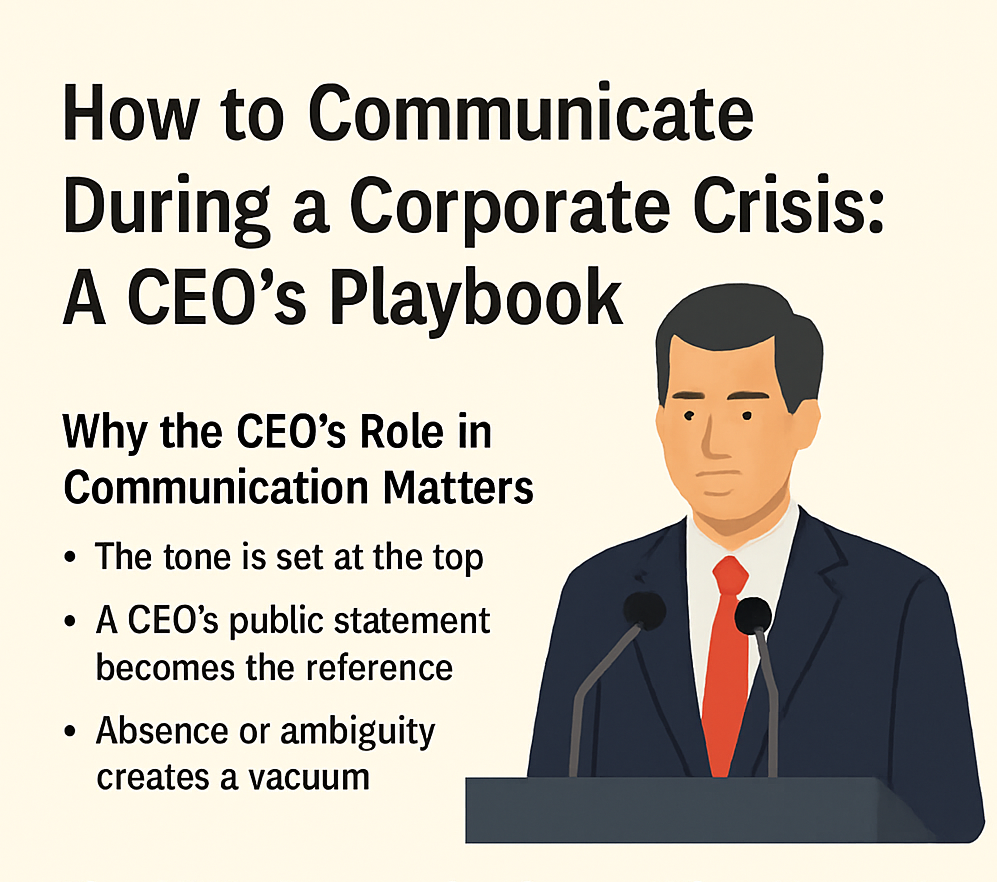When a corporate crisis strikes — be it a financial scandal, data breach, or PR disaster — the CEO becomes the face of the company’s response. One misstep in communication can deepen the crisis, erode stakeholder trust, and damage the company’s valuation and long-term reputation.
Why the CEO’s Role in Communication Matters
• The tone is set at the top: Employees, shareholders, and customers look to leadership for confidence.
• A CEO’s public statement becomes the reference point for all media and market narratives.
• Absence or ambiguity creates a vacuum filled with speculation.
The CEO’s Communication Checklist
1. Speak quickly — but with preparation.
Within 24–48 hours, a public message must be delivered.
2. Be transparent, even if facts are limited.
Say what you know, what you don’t, and what you’re doing next.
3. Accept responsibility where needed.
Legal teams may advise caution, but silence or deflection backfires.
4. Use consistent messaging across channels.
Internal emails, media statements, and social posts must align.
5. Project leadership and empathy.
Acknowledge the human impact before protecting the brand.
What Not to Do:
• Don’t overexplain or provide conflicting updates.
• Don’t blame employees, media, or external actors too early.
• Don’t disappear — absence equals guilt in the public eye.
Real-World Example
When Johnson & Johnson faced the Tylenol poisoning crisis in the 1980s, CEO James Burke’s transparent and human-centered communication saved the brand. He prioritized lives over profits and told the truth — becoming a textbook case in crisis leadership.
Our Support for Executives
We help CEOs:
• Write or refine public and internal statements
• Train for media interviews under pressure
• Align legal and PR objectives
• Act as trusted outside advisors in high-stakes moments
📩 Want to protect your leadership reputation during a crisis? Let’s talk:
